
![]()
![]()
![]()
![]()
EPPO/FAO Workshop - How to manage Invasive Alien Plants?
A case study of Solanum elaeagnifolium
Sousse, Tunisia, 2006-05-29/31
This workshop was not only the opportunity to exchange information on the status of Solanum elaeagnifolium, its pathways for introduction and its control, but also to observe the plant in infested fields in the Kairouan and Sousse Gouvernorates of Tunisia. The Workshop recognized that S. elaeagnifolium is an invasive alien plant which threatens Mediterranean agro-ecosystems. It has not reached its geographical distribution limits and presents a risk more particularly for Southern and South-Eastern countries of the EPPO region. The Workshop made detailed recommendations on the management of S. elaeagnifolium both at international and national levels. Warm thanks are due to the NPPO of Tunisia an its Regional Service of Kairouan and to the Superior School of Horticulture and Breeding of Chott-Mériem for the fine organization of the Workshop and the most interesting technical visit in the fields.
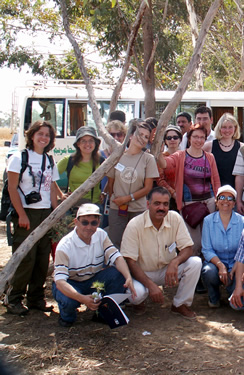
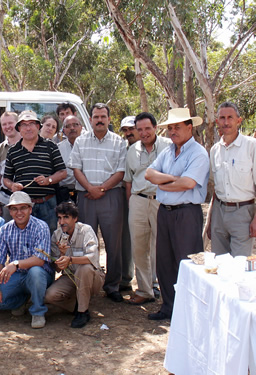
Download conclusions and recommendations of the Workshop: English | French
Solanum elaeagnifolium is multi-stemmed, up to 1 m tall, the aerial growth normally dying back during winter, with an extensive, spreading root system to over 2 m deep. Leaves are dark green to pale greyish green, petiolate, with entire or wavy margin. The fruit is an irregularly dehiscent berry, initially spherical, green drying and becoming yellow to orange at maturity. The flowers are generally bright blue to purple but sometimes white with yellow anthers.
S. elaeagnifolium mainly reproduces vegetatively, from buds on underground fragments. Fragments as small as 0.5 cm long and fragments buried up to 20 cm deep can regenerate. Sections of taproot may remain viable for up to 15 months. The plant reproduces by seeds which are highly viable and last at least 10 years.
The plant invades irrigated vegetable fields such as potato, chilli pepper, orchards (olive, fruits), cereal fields, fallows and road sides. It has strong economic and social impacts and requests extra weeding in the fields.
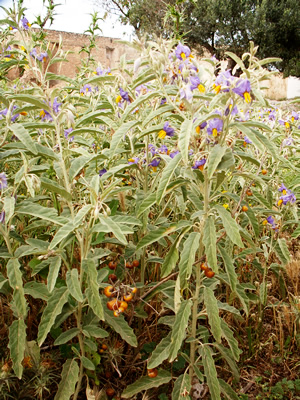
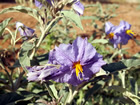
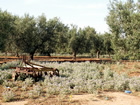
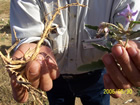
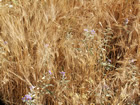
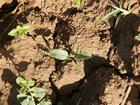
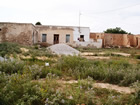
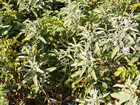
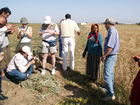
Presentations
General background
Invasive species in an international context: IPPC, CBD, European Strategy on Invasive Alien Species and existing legislation - Clare Shine, Council of Europe, UICN
Presentation of EPPO - Françoise Petter, EPPO
Biology, distribution and impact of Silverleaf nightshade (Solanum eleaegnifolium Cav.) – Mounir Mekki, Tunisia
Solanum eleaegnifolium, a source of Potato Virus Y (PVY) propagation – Sonia Boukhris-Bouhachem, Tunisia
An assessment of Solanum elaeagnifolium in North-African countries
Management of the spread of Silverleaf nightshade (Solanum eleaeagnifolium Cav.) in Kairouan gouvernorat - Ezzeddine Chalghaf, Tunisia
State of infestation and harmfulness of Solanum elaeagnifolium in Morocco – Abdelkader Taleb, Morocco
EPPO Pest Risk Analysis
Presentation of the EPPO decision support scheme on Pest Risk Analysis - Sarah Brunel, EPPO
Pest Risk Analysis of Solanum elaeagnifolium performed by the EPPO Panel on Invasive Alien Species - Gritta Schrader, Germany, Zdenek Chromi, Czech Republic and Istvan Dancza, Hungary
Pest Risk Management: Consignment of grain (Zea mays, Sorghum bicolor, Triticum aestivum) coming from countries where S. elaeagnifolium occurs – Zdenek Chromy, Czech Republic
Experiences with management methods
Strategy of chemical control against Silverleaf nightshade (Solanum elaeagnifolium Cav.) – Yahya Baye, Morocco
Potential for classical biological control of Silverleaf nightshade in Mediterranean Europe - René Sforza, USA
